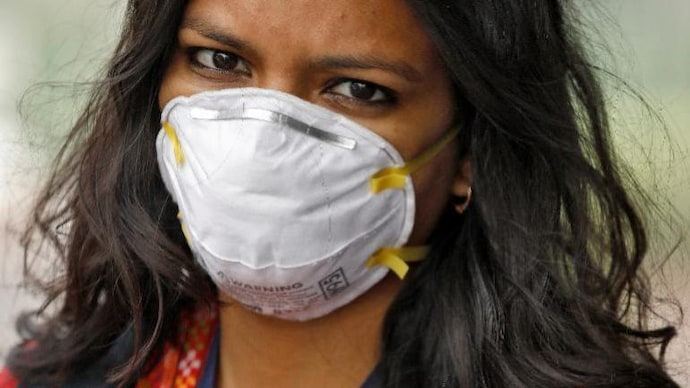Not just in Delhi, people in Kanpur too are choking to death
It's not just Delhi that starves its residents of clean air, as the rising levels of air pollution in Kanpur in the recent years have made it even worse for its inhabitants to breathe.

In Short
- Kanpur, the industrial hub of Uttar Pradesh, in the past few years or so, has broken barriers when it comes to the Air Quality Index (AQI)
- In November last year, Kanpur's PM2.5 annual average was 173 microgram per cubic metre (ug/m3) while Delhi, at No. 6 on the list, had 143ug/m3
- Emissions from vehicles and proliferating tanneries combine to produce a toxic cocktail of air pollutants in Kanpur
Delhi has earned itself a not-so-enviable distinction of being amongst the most polluted cities in the world, courtesy the 'great smog' in November last year. But it's not just Delhi that starves its residents of clean air, as the notoriously rising levels of air pollution in Kanpur in the recent years have made it even worse for its inhabitants to breathe.
Kanpur, the industrial hub of Uttar Pradesh, in the past few years or so, has broken barriers when it comes to the Air Quality Index (AQI), with even the world taking note. The World Health Organisation (WHO), in May 2018, declared Kanpur as world's most polluted city. The ranking was based on 2016 data from the Central Pollution Control Board on the amount of particulate matter (PM) under 2.5 microgram.
In November last year, Kanpur's PM2.5 annual average was 173 microgram per cubic metre (ug/m3) -- that's three times the national safe level at 60ug/m3 -- while Delhi, at No. 6 on the list, had 143ug/m3.
ALSO READ | See: What stubble burning in North India looked like from the sky this week
A WHO study has estimated that nine out of 10 people worldwide breathe air that contains high levels of pollutants. The Indian Medical Association (IMA) had termed the situation in November-December last year as a public health emergency, akin to smoking 50 cigarettes a day.
And since, it's that time of the year again (read: the ill-famous stubble burning season in Punjab and Haryana), the AQI has already started rising in Delhi and its surrounding areas. The situation in Kanpur is even worse, where the AQI value was recorded to be 422 and air quality marked under 'Severe', on October 29 at 4 pm, in comparison with 367 AQI and 'Very Poor' ranking for Delhi.
In Agra, the AQI was recorded at 327, with 'Very Poor' air quality. Other cities that recorded a 'Very Poor' ranking at the AQI are Noida (374), Muzaffarnagar (345), Lucknow (305), Baghpat (377), Agra (325), Bulandshahr (351), Greater Noida (385), Gurugram (389), and Hapur (357).
While the main ingredients of air pollutants in Agra and Kanpur were PM2.5, in Delhi, they were a mixture of PM2.5 and PM10.
WHAT ARE PM2.5 AND PM10?
Coarse dust particles (PM10) are 2.5 to 10 micrometre in diameter. Sources include crushing or grinding operations and dust stirred up by vehicles on roads. These tiny particles are small enough to be inhaled going past the defensive nose hair and into the lungs.
Fine particles (PM2.5) are 2.5 micrometre in diameter or smaller, and can only be seen with an electron microscope. Fine particles are produced from all types of combustion, including motor vehicles, power plants, agricultural burning and some industrial processes.
While PM10 particles stop at the lungs, PM2.5 can pass from them into blood supply and be carried throughout the body.
READ | Green crackers become applicable only to Delhi-NCR: 12 things about them
BUT WHY KANPUR?
Emissions from vehicles, proliferating tanneries and coal burnt by industry combine to produce a toxic cocktail of air pollutants in Kanpur.
Experts have attributed the meteoric rise in pollution levels in Agra and Kanpur to the number of industrial waste in the adjoining areas. The wind direction in the cities also brings pollutants from other areas to them.
The wind predominantly blows from the northwest to the east for most of the year. Experts have suggested that more than 60 per cent of the particulate matter found in Kanpur is generated elsewhere.
Also, the high levels of humidity in this region contribute to the formation of secondary aerosols that remain suspended over the land-locked region. In many smaller cities, chulhas (wood or coal-fired stoves) contribute to 25 per cent of the outdoor pollution.
A Reuters report, in May, quoted a 2015 report by the government-run Indian Institute of Technology (IIT), Kanpur stating that in the city, particulate matter such as dust and soot accounted for around 76 per cent of air pollution during the winter months. Biomass burning accounted for around 15 per cent and emissions from vehicles about 8 per cent in Kanpur.
READ | Air pollution time bomb is ticking in NCR
SPIKE IN RESPIRATORY AILMENTS
During November every year, hospitals across Delhi register a minimum increase of 25 per cent in respiratory illnesses.
The Reuters report quoted a Kanpur hospital staff saying how every week, in the winter months, a lung cancer patient walks in. "Earlier, we would get one in three months," the staff added.
Hospitals in these smaller cities have seen a spike in diseases such as bronchial asthma, chronic obstructive pulmonary disease and pneumonia -- a result of air pollution -- in recent years. The biggest hospital in Kanpur is so overcrowded with patients with respiratory ailments that they are often bedded in the ophthalmology ward.
WAY AHEAD
Partially or fully land-locked cities in India are not the only ones with these kind of geographical constraints. The need of the hour is to build and enforce anti-pollution models, like those that exist in other countries, that specifically target land-locked areas.
(With inputs from PTI and Reuters)
WATCH | With poor air quality, Delhi turns gas chamber
